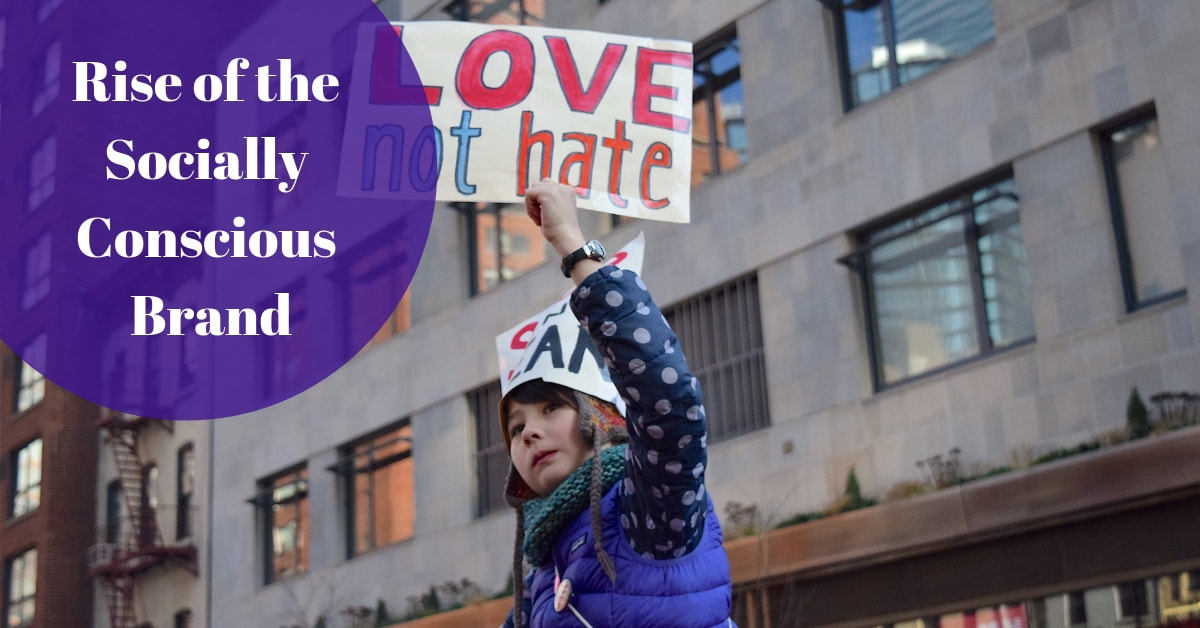|
Before the rise of the modern day activist brand, companies previously held a low standard on what it meant to be a socially conscious brand. However, as the evolution of the socially conscious brand has begun to take on more meaning, consumers are demanding brands take a stand on the social inequalities that the brands had once tried to ignore. Marketers must understand the evolution of the socially conscious brand to foresee the future of what the socially conscious brand will become.
1900’s: Fiscal Philanthropist In the past, brands did not have to do much to be considered socially conscious. All they had to do was simply write a yearly check toward a cause or selected charity. Their impact to bring about social change was no more than the silent Fiscal Philanthropist. Although their monetary donations are appreciated, the donations did little to bring positive social change. Today, brands still claim to be socially conscious by writing a yearly check. However, consumers are dismissing the "blank check" approach as part of a corporate show with little sentiment to create lasting social change. Mid 2000’s: Social Givers Then came along brands like Tom's and Warby Parker that revolutionized the Socially Conscious Brand with the Buy One, Give One model of giving that redefined what it meant to not only be socially conscious, but active. The new socially conscious brand was no longer a once-a-year commitment, but a constant source of social good to support far-away nations and impoverished peoples. This created a wave of corporations poorly copying the Tom's and Warby Parker model of the socially conscious brand, pushing to remain relevant by engaging in a form of corporate poverty porn. Major companies patted themselves on the back by appearing in photos and videos as saviors of the third world, but continuing to remain silent to the inequalities that existed at home. 2010 – 2016: Cautious Ally With the rise of multiculturalism and the modern LGBT movement, 2010 brands began to test their influence to impact social change. As support for diversity and LGBT causes increased, brands such as IKEA, Oreo, and Tiffany & Company recognized the power of representation by engaging with the LGBT movement. The introduction of same-sex couples to their advertisements not only brought higher sales and brand recognition, it created discourse about the subject. This recognition brought about the need for increased diversity and multiculturalism in advertising to represent all consumers. Companies followed suit, releasing campaigns like Coca Cola’s America the Beautiful ad in 2014 that championed racial and ethnic diversity. The new Socially Conscious brand was a champion for diversity and used its influence to recognize the beauty of multiculturalism. Consumers rewarded brands that they saw represented the diversity of America with higher sales and higher brand recognition. Hundreds of companies began establishing diversity and inclusion departments to mirror the diversity of the marketplace in their offices to encourage diversity of thought. However, although brands were quick to embrace multiculturalism and include those once ignored by advertisers, their involvement only went as far as being cautious corporate allies. Brands were still skittish around causing real social change. 2016 - Present: Vocal Activist The election of the new administration rang in a new era for the Socially Conscious Brand: The era of the Resistors. Socially Conscious Brands have evolved from the brand as an active observer to a vocal advocate against injustice. The presence of more multicultural, female, and LGBT representation in the workforce has given rise to the vocally polarizing brands we see today. From Ben & Jerry refusing to serve two scoops of the same ice cream in Australia for LGBT rights to Nike’s Collin Kaepernick ad to the recent Gillette #MeToo ad, brands have recognized the power of their voice for social change. Today, the socially conscious brand must go further than donate money. They must create discourses around injustice and be able to challenge the status quo. Consumers are more active in social issues than ever, and they expect the brands they use to reflect those values. Although new social warrior brands have repelled some consumers, all in all, they have been rewarded for their social convictions by loyalists and activists alike. 2020 – Future: Transparent Role Model Skepticism still exists around the socially conscious brand of today and the motives behind becoming social warriors. Many consumers argue that the socially conscious brand is only challenging the status quo to benefit their bottom line. Therefore, the socially conscious brand of the future must prove to consumers that they practice what they preach by incorporating diversity throughout the office. Transparency is the next step in brand evolution where consumers will want to see top management reflecting diversity principles that the company promotes. Customers in stores will want to see products that accommodate people of different abilities, religions, and gender identities. Marketers, heed note because soon enough diversity will become tangible in the products and services we use every day. Utilize diversity recruiters to start the change in the office space, create social groups within your company to celebrate diversity, and engage in social celebrations such as Pride and other cultural festivals. Start preparing your corporate culture now because otherwise, you will fail to be the socially conscious brand of tomorrow.
0 Comments
Leave a Reply. |
AuthorDCAProSearch Archives
April 2020
Categories
All
|
Knowledge is power
Service FORMS |
Company |
|


 RSS Feed
RSS Feed